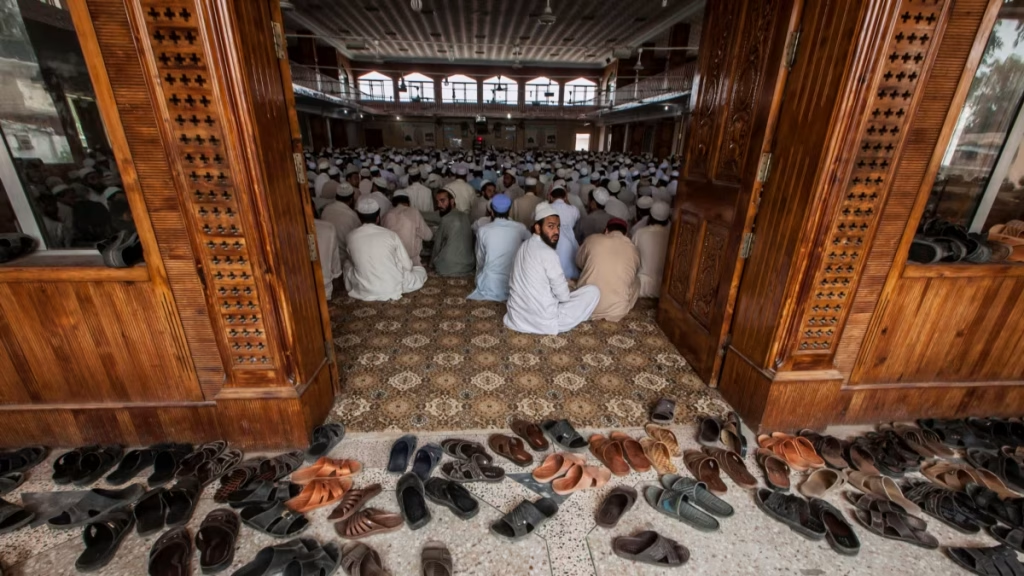Pakistan’s madrassas have long been hubs for religious education and cultural preservation. Over the years, these institutions have garnered attention for their pivotal role in providing education, particularly to underserved communities. However, the increasing presence of Afghan clerics and students has raised significant security concerns. These concerns revolve around the potential for radicalization, the spread of extremist ideologies, and links to cross-border terrorism. With the intricate socio-political ties between Pakistan and Afghanistan, the issue is multifaceted and demands careful scrutiny.
The Role of Madrassas in Pakistan
Historical Background of Madrassas
Madrassas, derived from the Arabic word for “school,” have been a cornerstone of Islamic education for centuries. In Pakistan, their prominence grew during the colonial era as centers of resistance and preservation of Islamic identity. By the 1980s, during the Soviet-Afghan war, madrassas received international funding to support jihad against Soviet forces. This period marked a significant shift, as many madrassas incorporated militant ideologies alongside religious teachings.
Their Importance in Society
Madrassas fulfill a critical role in Pakistan, particularly in rural and underprivileged areas where formal education systems are often inaccessible. They provide free education, meals, and accommodation to students who might otherwise remain uneducated. Beyond education, madrassas serve as community centers, offering guidance on social and moral issues.
Afghan Presence in Pakistani Madrassas
How Afghan Clerics Influence Religious Education
Afghan clerics, bring unique interpretations of Islamic teachings. While many contribute positively by enriching the curriculum, others introduce rigid and, at times, extremist ideologies. These clerics wield significant influence, shaping the perspectives of their students and fostering a sense of allegiance that transcends national boundaries.
Increasing Numbers of Afghan Students
The enrollment of Afghan students in Pakistani madrassas has seen a sharp rise over the past two decades. According to a report by the International Crisis Group, approximately 15-20% of students in Pakistan’s madrassas are Afghan nationals. This trend is driven by various factors, including the collapse of Afghanistan’s education system during years of conflict and the economic hardships faced by Afghan families.
Factors Driving Afghan Enrollment
- Proximity to Afghanistan: Many madrassas in Pakistan’s border regions, such as Khyber Pakhtunkhwa and Balochistan, are geographically convenient for Afghan families.
- Cost-Free Education: Afghan families, struggling with poverty, find madrassas appealing due to their no-cost education model.
- Religious Compatibility: The shared Sunni Muslim faith between the two nations creates an environment of acceptance.
Security Challenges Linked to Afghan Clerics and Students
Radicalization Risks
One of the primary security threats linked to Afghan clerics and students is the potential for radicalization. Some madrassas have been identified as breeding grounds for extremist ideologies. A 2021 report by the Pak Institute for Peace Studies (PIPS) highlighted that certain madrassas promote narratives that glorify jihad and endorse anti-state activities. Afghan clerics, in particular, have been implicated in fostering such ideologies, leveraging their influence to recruit students for militant causes.
Cross-Border Influence
The presence of Afghan students and clerics in Pakistani madrassas complicates the already volatile relationship between the two nations. These individuals often serve as conduits for foreign ideologies, including those propagated by groups like the Taliban and Al-Qaeda. Intelligence reports have revealed instances where madrassa networks facilitated the movement of militants and resources across the Pakistan-Afghanistan border.
Links to Extremist Groups
Several investigations have uncovered direct links between madrassas hosting Afghan students and extremist organizations. For example:
- TTP Recruitment: The Tehrik-i-Taliban Pakistan (TTP) has exploited madrassas as recruitment hubs. Afghan students are particularly vulnerable, given their socio-economic hardships and lack of alternatives.
- Funding Channels: Some madrassas receive financial support from foreign entities with vested interests in promoting extremism, further exacerbating security risks.
Socio-Political Impacts of Afghan Presence
Strain on Local Resources
The influx of Afghan students adds pressure to Pakistan’s overstretched education and housing infrastructure. Local students often face increased competition for limited resources, leading to resentment and social tensions.
Impact on Pakistan’s Relations with Afghanistan
While madrassas have the potential to strengthen cultural ties, the security concerns they pose often overshadow their educational contributions. Pakistan’s perceived role as a safe haven for Afghan extremists has strained diplomatic relation.
Efforts to Address Security Concerns
Government Regulations on Madrassas
In recent years, Pakistan has taken steps to regulate madrassas and address security concerns. Key initiatives include:
- National Action Plan (NAP): Introduced in 2015, the NAP mandates the registration and monitoring of madrassas, ensuring transparency in funding and curricula.
- Curriculum Reform: Efforts to standardize religious education and incorporate modern subjects aim to counter extremist narratives.
Collaboration with Religious Leaders
The government has engaged religious leaders to build consensus on madrassa reforms. Initiatives like the Ittehad-e-Tanzeemat-e-Madaris (ITM) have been instrumental in bridging gaps between the state and religious institutions.
Balancing Education and Security
Promoting Inclusive Religious Education
Introducing modern subjects, such as science, mathematics, and civic education, alongside religious studies can create a balanced curriculum. This approach fosters critical thinking and reduces susceptibility to extremist ideologies.
Monitoring Without Alienation
Effective monitoring mechanisms are crucial but must be implemented with sensitivity. Excessive surveillance risks alienating students and clerics, potentially driving them toward underground networks.
The Afghan presence in Pakistani madrassas is a double-edged sword. While it highlights the shared cultural and religious heritage of the two nations, it also poses significant security challenges. Addressing these challenges requires a balanced approach that safeguards national security while preserving the educational role of madrassas. By fostering inclusivity, promoting moderation, and ensuring transparency, Pakistan can transform its madrassas into institutions of positive change.


